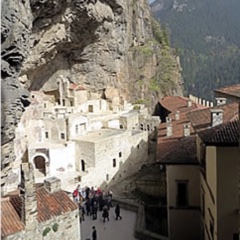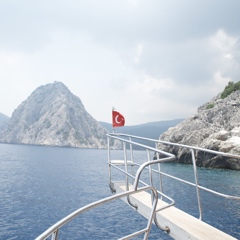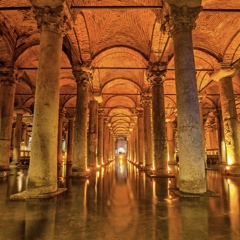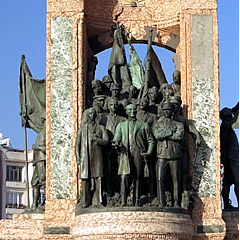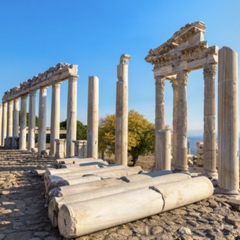The Phrygians were a Thracian people who flourished in Western and Central Anatolia from about 1200 to 546 BC.
Around 1200 BC there were great migrations of “Sea Peoples” from Greece and Thrace to Anatolia. Some of these people—probably Phrygians—conquered the Hittite capital of Hattusha (hah-TOO-shah, Boğazkale) and set up their own city there. Phrygians may also have participated in the battle for Troy.
Having come from Thrace, the Phrygians occupied Anatoliafrom the Sea of Marmara to the Halys (or Kızılırmak) River, as far east as Çorum, Yozgat, Nevşehir and Niğde. Important Phrygian cities included Afyon, Ankara, Gordion, Eskişehir and Hattusha.
In the same period other “Peoples” migrated to the Aegean coast, giving rise to other cultures: Ionian around İzmir, Lydian around Sardis, Carian around Milas, and Lycianaround Antalya. The flowering of classical Hellenic civilization happened along the Aegean coast about the same time the Phrygians were flourishing inland.
These cultures flourished for 3 or 4 centuries, that is from around 1000 to 600 BC. The Phrygian Kingdom flourished under Midas at Gordion from about 725 to 675 BCE—only half a century—before a Cimmerian invasion put an end to this golden age.
While the Phrygians flourished, here’s what else was happening:
– The great Hellenic philosophers, poets and scientistswere holding forth in Ionia
– Rome and Byzantium were founded as small towns
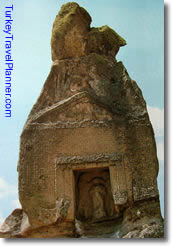 |
|---|
| A similar monument at nearby Aslankaya. |
– The earliest Jewish prophetswere teaching their wisdom
– In India, physicians were learning their art, no longer looked upon as mystical, from anatomical models
– The wretched Assyriansdiscovered that if they filled animal bladders with air they could float across rivers and kill people on the other side.
Phrygian culture flourished again from the mid-600s to the mid-500s alongside the great florescence of Hellenic civilization, science and philosophy in Ionia (the region around İzmir). Coinagecame into use in Anatolia around this time, and King Croesusof Lydia, one of its first great advocates, became exceedingly rich using it.
Phrygian culture recovered after the Cimmerian invasion and flourished again to the west of Gordion between Eskişehirand Afyon for a short period, leaving the monuments at Midas Şehri (Yazılıkaya), Aslankaya, Aslantaş, etc. More…
In 546 BC, Cyrus of Persia conquered Anatolia all the way to Ionia, putting an end to the Phrygian flowering for good. And in 333 BC Alexander the Great stormed through and cut the Gordian knot.
| Gordion |  |



